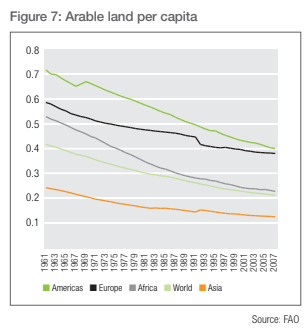
Insights
UHNWI Overexposed to Domestic Markets
According to KKR, many ultra-high-net-worth individuals have over concentrated their investments in domestic markets, primarily in the U.S. or Europe. We believe exposure to farmland Investments in emerging markets can mitigate regional risks and provide a more balanced portfolio.
In today's shifting global economy, Ultra High Net Worth Investors (UHNWIs) find themselves uniquely positioned to capitalize on emerging opportunities across both public and private markets. Their patient capital allows them to embrace complexity and illiquidity, setting them apart in an increasingly intricate investment environment.
However, the road ahead isn't without challenges. Anticipated lower returns and heightened volatility demand more flexible asset allocation strategies. UHNWIs must adapt their portfolios to maintain attractive risk-adjusted returns amid changing market conditions.
Key Insights for UHNWIs:
Asset Allocation: A significant 46% of UHNWI assets are in alternative investments, compared to 24% for pension funds, highlighting a strong preference for illiquid assets.
Challenges Ahead: Expected returns are projected to drop from 9.3% to 5.3%, necessitating portfolio repositioning to leverage market dislocations and volatility.
Risk Factors: Home market bias, insufficient hedging, and concentration in certain asset classes pose risks to future returns.
UHNWIs must remain vigilant. Addressing concentration risks, mitigating home market biases, and enhancing risk hedging are essential steps forward. Empowering CIOs with greater autonomy will enable more responsive and strategic asset allocation, aligning investments with the evolving financial terrain.
In sum, agility and proactive portfolio management are key. By adapting to market shifts and embracing strategic flexibility, UHNWIs can continue to achieve robust, risk-adjusted returns despite the challenges on the horizon.
Embracing Sustainable Agriculture: Asymmetrica Investments' Innovative Approach to Impact Investing
Introduction:
In today's world, faced with climate change, escalating population, and economic volatility, sustainable agriculture offers investors the chance to harmonize their financial objectives with favorable environmental and societal impacts. Asymmetrica Investments, an investment firm with roots in Mexico and Switzerland, leads this initiative by targeting undervalued fertile, arable land in Mexico and pinpointing asymmetric investment opportunities in high-margin agricultural assets.
The Nearshoring Phenomenon:
Fueled by Mexico's strategic geographic position, cost efficiency, and skilled labor force, the nearshoring trend has propelled the country to the second-highest reshoring destination globally, as reported by Kearney's 2021 Reshoring Index (Kearney, 2021). This movement extends to the agricultural sector, where companies increasingly capitalize on Mexico's competitive edge to streamline their supply chains and curb expenses. Mexican agricultural exports have grown at an average annual rate of 7.4% from 1993 to 2020, reaching a record high of $45.2 billion in 2020 (INEGI, 2021). This growth has been partly driven by increased demand for organic produce, with the global organic food market expected to reach $679.81 billion by 2027, growing at a CAGR of 10.5% (Grand View Research, 2020).
Asymmetrica's Distinctive Strategy:
Asymmetrica Investments' Avo Capital Fund is devised to provide investors access to the flourishing nearshoring movement in agriculture while potentially attenuating inflationary threats. The firm's investment approach encompasses:
Procuring farmland from retiring farmers, addressing the demographic issue of Mexico's aging farmer population. In Mexico, the average age of farmers is 55 years, with nearly 26% of them aged 65 or older (FAO, 2017).
Converting acquired farms to organic practices, advocating for environmental sustainability, and diminishing the utilization of detrimental chemicals. Organic farming has been shown to increase soil biodiversity by 30% and reduce greenhouse gas emissions by 40% to 60% per hectare (Reganold & Wachter, 2016).
Assigning equity ownership to farm workers, financially empowering them, and nurturing a sense of collective responsibility for the farm's prosperity. This approach can lead to increased productivity, as studies have shown that employee-owned companies can be up to 4% more productive than their counterparts (Kruse et al., 2010).
Geographic Asset Distribution:
The Avo Capital Fund intends to invest in approximately 15 farmland enterprises, allocating two-thirds of the investments in Mexico and the U.S., where over 50% of farmers will approach retirement age within the next decade (USDA, 2019). The remaining investments will target other Latin American nations, further diversifying the fund's portfolio.
Conclusion:
Asymmetrica Investments' approach to impact investing in the agricultural domain presents a singular opportunity for investors to align their financial goals with sustainable development objectives. By adopting sustainable agriculture and supporting local communities, investors can contribute to a more robust and environmentally aware future while profiting from Mexico's expanding nearshoring phenomenon.
To discover more about the Avo Capital Fund, read our recent spotlight in ImpactAlpha shorturl.at/wCIPZ.
#SustainableInvesting #ImpactInvesting #Agriculture #OrganicFarming #Mexico #AsymmetricaInvestments #Nearshoring #InflationHedge
References:
FAO. (2017). El perfil del productor agropecuario en México. Food and Agriculture Organization of the United Nations. http://www.fao.org/3/a-i7654s.pdf
Grand View Research. (2020). Organic Food Market Size, Share & Trends Analysis Report. https://www.grandviewresearch.com/industry-analysis/organic-foods-beverages-market
INEGI. (2021). Estadísticas históricas de México. Instituto Nacional de Estadística y Geografía. https://www.inegi.org.mx/app/tabulados/interactivos/default?px=EstHist2016_3_3_01&bd=EHE&tipo=1
Kearney. (2021). 2021 Reshoring Index. https://www.kearney.com/operations-performance-transformation/us-reshoring-index
Kruse, D., Freeman, R. B., & Blasi, J. R. (2010). Shared Capitalism at Work: Employee Ownership, Profit and Gain Sharing, and Broad-Based Stock Options. University of Chicago Press.
Reganold, J. P., & Wachter, J. M. (2016). Organic agriculture in the twenty-first century. Nature Plants, 2(2), 15221. https://doi.org/10.1038/nplants.2015.221
USDA. (2019). 2017 Census of Agriculture. United States Department of Agriculture. https://www.nass.usda.gov/Publications/AgCensus/2017/Full_Report/Volume_1,_Chapter_1_US/usv1.pdf




